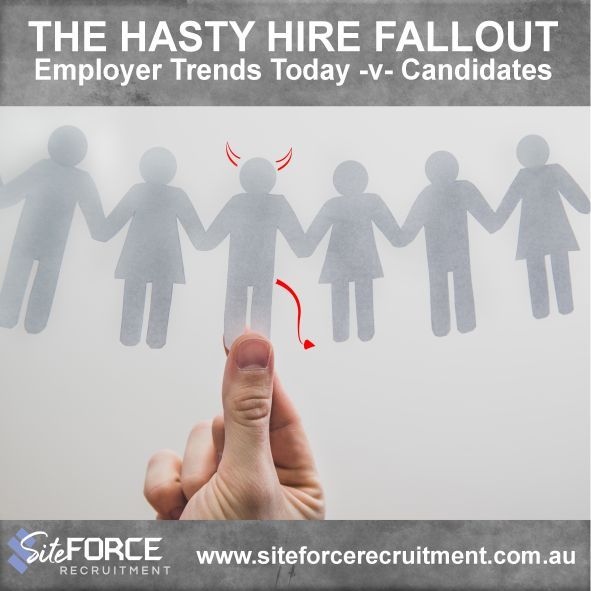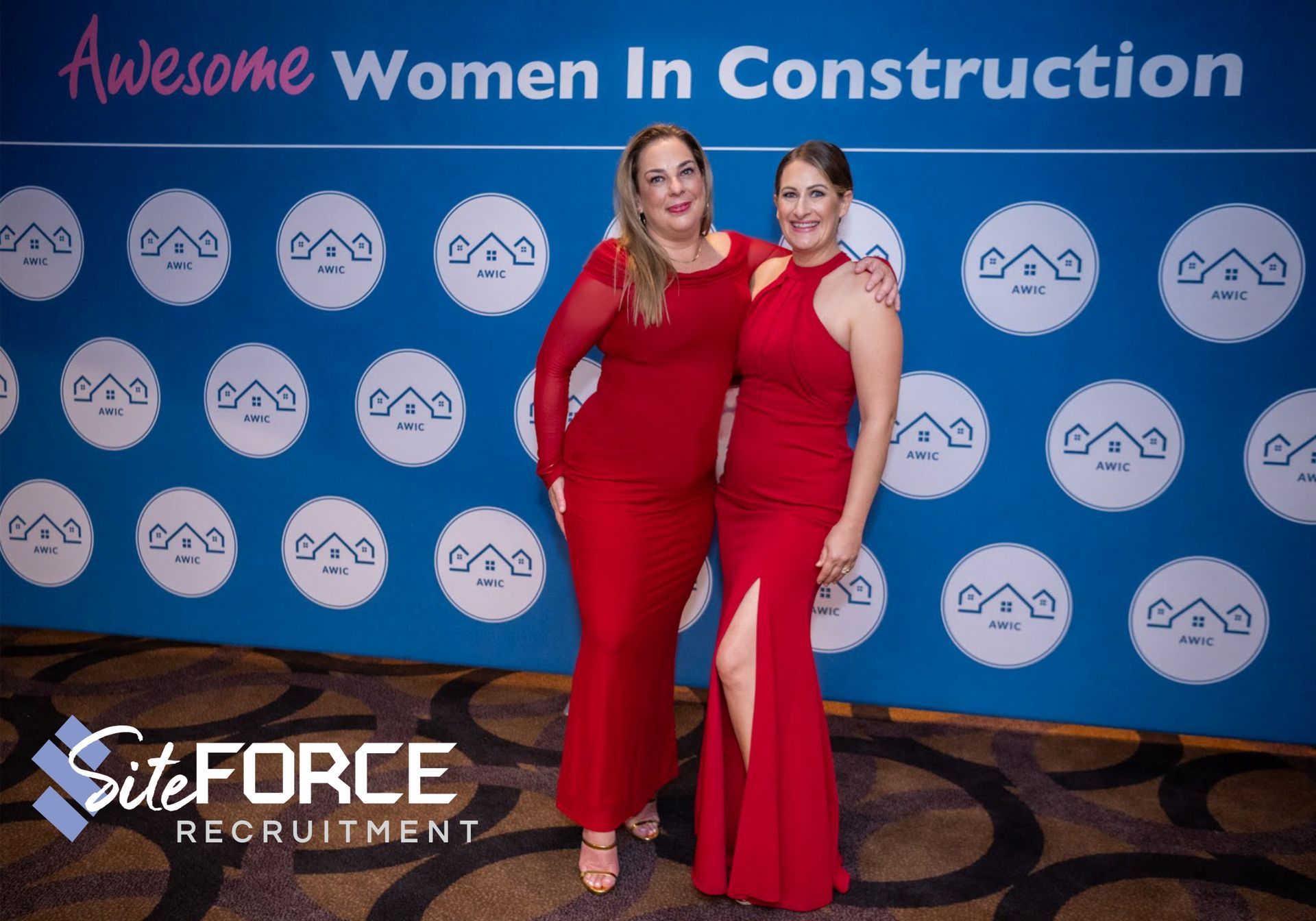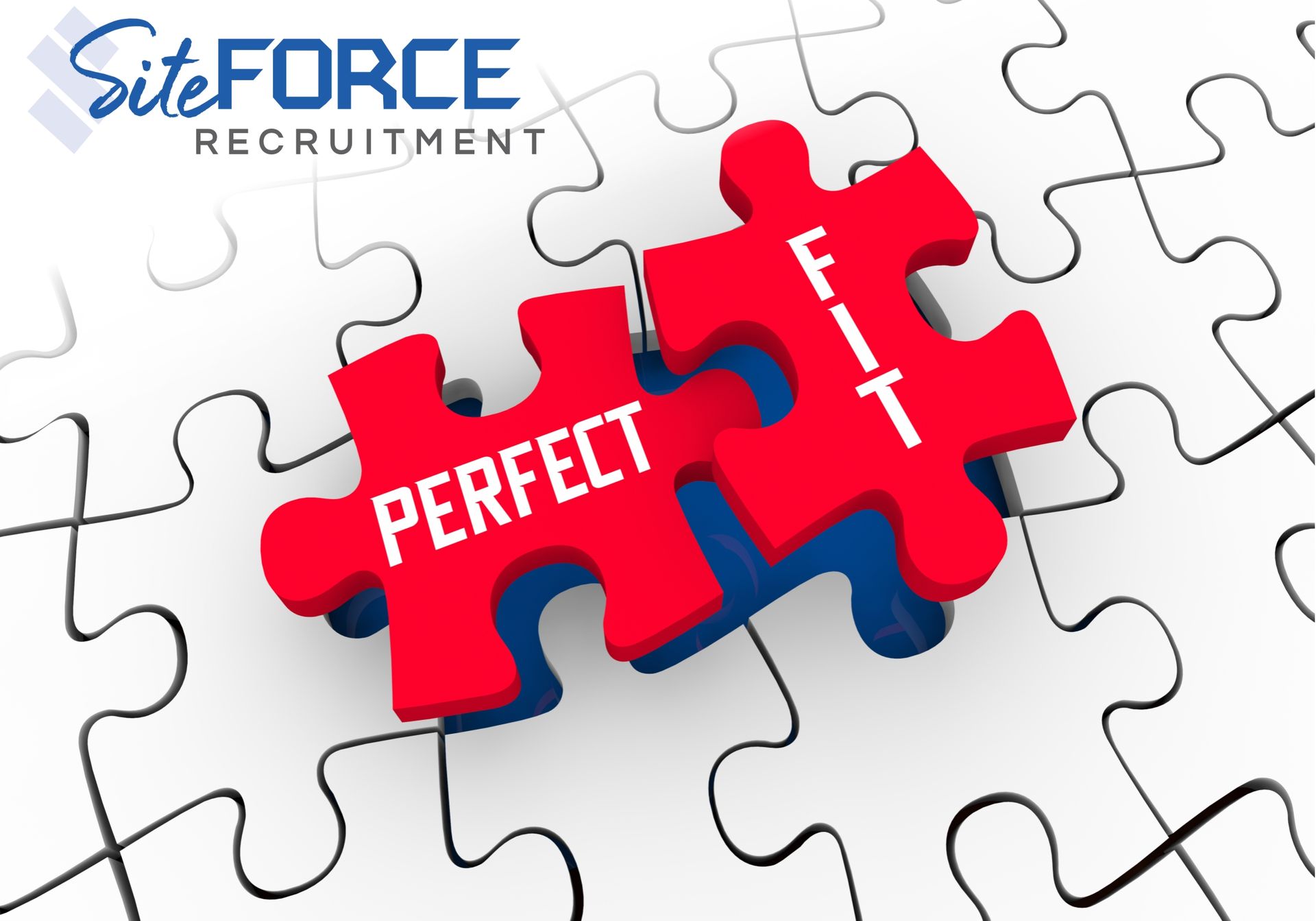THE HASTY HIRE FALLOUT
Employer Trends Today v Candidate Expectations

Imagine a plumber trying to rewire a house. Besides being illegal, of course, the plumber might understand the basics of electricity – positive, negative, circuits, and all that – but without the specific skills and training, they’re likely to make a mess of it, leaving the place in a blackout or, worse, sparking a fire.
In my experience, it’s much the same for a building or construction manager attempting their own recruitment. It’s crucial to recognise the limitations of doing it all yourself or in-house. You might know what a good hire looks like, the qualifications needed, and the importance of a solid team. But without the expertise and tools of a professional recruiter, the process can become inefficient and error-prone, leading to costly mistakes and delays.
Just as a plumber would struggle with rewiring a house and connecting the solar, a building or construction manager may find themselves out of their depth when handling recruitment. The nuances of attracting, vetting, verifying, and securing the best talent require a specific set of skills and expertise, honed over years of dedicated experience. Expert recruiters (yes, us) know the tech, the SEEK algorithm to ensure we hit the target on attraction rates, are privy to trusted industry insider conversations and reference check revelations that in-house staff or managers often miss.
Balancing the need for thorough candidate assessment with the efficiency that today's job market demands is a delicate task best left to professional recruiters. By understanding and leveraging our unique expertise, companies can navigate the hiring process smoothly and avoid the pitfalls of prolonged recruitment cycles that occur when lacking the efficiencies that professional recruiters bring.
The current situation: Hasty Hire Fallout
Australian companies are finally slowing down their hiring processes, returning to the norm after the recruitment frenzy of 2021 and 2022. That madness, known as the ‘great resignation’, saw people rethinking their careers and lifestyles after the pandemic. Employers have been dealing with the fallout from these hasty hires for the last two years. In 2024, they're taking a new approach, are hesitant to hire hastily, and taking the time to properly assess candidates and ensure they’re the right fit.
Sounds great doesn’t it. However, it is in conflict with expectations of candidates. So how do you meet both needs. Read on.
Employers Need to Surety -v- Employees Need For Speed
Job seekers aren’t too thrilled about these longer hiring processes though and are pushing back. A 2023 survey revealed that 44% of respondents wouldn't wait more than a week to hear back after a second interview. So, in this current economic and employment market, where both job seekers and companies are struggling, employers must find a balance between satisfactory employee vetting and efficient recruitment timelines. It is the perfect time to consider outsourcing to expert recruiters who have managed this balance successfully in the past.
Companies Losing Potential Employees Over Lengthy Hiring Processes
By mid-last year, the average time to hire an employee in Australia was 44 days, a number that's been creeping up consistently for the past four years. Companies with these long wait times are likely to be ‘ghosted’, as seven in ten candidates report doing so when potential employers took ‘too long’ getting back to them. Consequently, the drawn-out hiring process is a major barrier to attracting stellar candidates.
The New Generation of Job Seekers Have a Different Approach
Research shows that 55.8% of respondents would accept a less-preferred job if their top choice took too long to get back to them. Peter Holland, professor of human resource management at Swinburne University of Technology, notes that the younger generation of job seekers aren't looking for a ‘job for life’. He says, “they have loyalty to their own careers, not to an organisation” and are more focused on building and developing skills before moving on.
This emphasis on short-term stays makes younger job seekers less attached to specific roles and less likely to commit to a lengthy application process. According to Holland, “If an employer has been making a potential candidate wait for two or three weeks or doesn’t get back to them, then there’s a gap there, a perception that this isn’t a good company,” and the candidate will look elsewhere.
So, you might be missing out on excellent young talent full of energy if you can’t align employer needs with candidate expectations.
Speeding Up Recruitment Without Compromising Necessary Steps
The effectiveness of a short-term hiring process really depends on the industry. A story where this seemed to work was in 2022, but it's important to understand such stories in their proper context. What works for one company may not meet the needs of another.
Australia’s leading drinks retailer, Dan Murphy’s, runs its biggest recruitment campaign of the year with on-the-spot, 10-minute interviews offered in stores ahead of its busiest trading period. The retailer provides extensive training and valuable experience for new employees. Dan Murphy’s Managing Director, Agi Pfeiffer-Smith, said, “We pride ourselves on our culture of excellence with a great team-focused environment, and we provide training and offer a range of unique opportunities across our diverse network of retail stores, hotels, and wineries as well.”
Results and Is There a Better Way?
The 2022 campaign saw more than 2,000 team members recruited, with over half still employed by Dan Murphy’s today. While this is a fantastic achievement and we applaud the initiative, it simply wouldn’t work in construction, where specific qualifications, external codes and standards, licensing, and insurances are essential.
In construction, a 50% retention rate isn't a success story. It might be acceptable for inexperienced or lazy recruiters, but not for professionals. We know of firms that mass-post ads, hire en masse, and hope whoever sticks around on-site will do, especially for short-term labourers.
Yes, I know exactly what you’re thinking – what a lot of time wasted for everyone!
The disruption to workplace culture from losing 50% of new recruits, along with the costs of onboarding and training, is staggering. There is a much better way to achieve superior results while respecting everyone’s time.
Saving Money By Not Cutting Corners
Considering the fallout from the recent hiring frenzy, it's clear that slashing hiring standards to the bare minimum isn't a viable solution anymore (not that it ever really was, to be honest). Ensuring a good culture fit is crucial for permanent roles, and inadequate background checks and skills appraisals are always risky—especially in construction, with its complex compliance regulations.
Beyond candidates resisting longer hiring processes, recruitment is an expensive endeavour, whether done in-house or outsourced. When you factor in all costs, a shorter hiring time not only makes potential employees more likely to accept but also saves companies money—if they don't cut corners.
Reducing Hiring Timelines with Smooth Digital Systems
A recent survey found that 90% of respondents felt technology simplified the hiring process. This is unsurprising, as in 2024, most candidates are digital natives aged 25 to 44, juggling job hunting with busy work schedules.
Sophisticated recruitment technology that we use streamlines hiring, reducing time-to-hire while maintaining a steady workflow. Implementing such technology not only eases the workload for internal teams but also enhances the candidate experience, instilling confidence in the company.
Connecting the Needs of both Companies and Candidates
In the end, while Aussie companies are slowing down to avoid hasty hires, they need to be careful not to drag their feet too much. The new generation of job seekers won’t wait around forever, and the other generations don’t have that much patience for long processes. Companies risk losing top talent if they take too long.
With the right balance and the help of snazzy new tech, we keep the recruitment process swift and effective.
Our Superpower
Our leading 'superpower' is attracting and retaining quality team members who share our values of honesty, integrity, diligence, and service, allowing us to deploy quality team members on client sites quickly.
Our team member's superpower is being motivated, prepared and ready to enthusiastically contribute to the projects at hand, more than just a pair of hands.
Related articles:
Read other informative articles for both employers and workers at: https://www.siteforcerecruitment.com.au/blogs
Chantal Penny is the Director with Superpowers of SiteForce Recruitment. A thought leader in the industry, Chantal, based on her expertise and industry perspective, offers unique guidance, inspiration, and influence in the industry. Chantal Penny is also a thought leader in the industry with her Podcast, Talent Instinct, which is available at:
https://talentinstinctpodcast.libsyn.com/site
At SiteForce Recruitment, we specialise in labour-hire and permanent recruitment in the construction industry. We are committed to valuing people, safety and wellbeing, collaboration, trust and, of course – results!
CONNECT with us via our contact page or bookings links on our website if you are looking to recruit for, get your dream job, or join our amazing labour force team.











